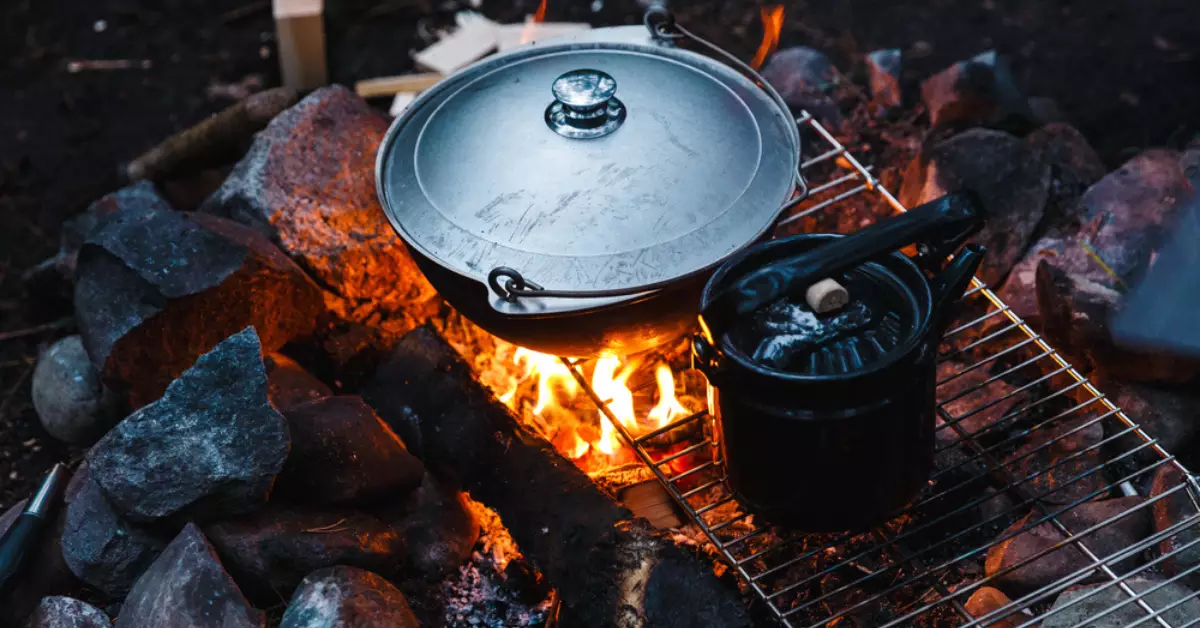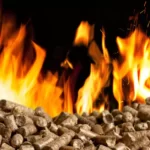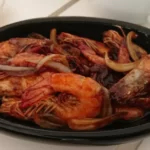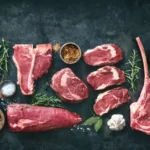Cooking over a wood fire brings with it a sense of tradition, a hint of primal instinct, and most importantly, a unique flavor that’s tough to achieve any other way. The choice of wood plays an incredibly pivotal role in this process, influencing everything from the heat of the fire to the taste imparted to the food. Among the many types of wood used, one that often comes under question is Ash wood.
Yes, Ash wood can be used for cooking. As a hardwood, it burns hot, produces minimal smoke, and imparts a relatively neutral flavor, making it suitable for various types of cooking. Furthermore, it’s abundantly available, especially in regions like North America, adding to its appeal for use in culinary applications.
However, as with any wood, Ash comes with its set of considerations. From understanding its heat output to the flavor it lends to food and even its environmental impact, each aspect requires thorough evaluation.
Ash Wood: An Overview
Characteristics of Ash Wood
Ash wood, belonging to the Fraxinus genus, is a dense hardwood known for its impressive burning properties. It’s easy to split, dries relatively quickly, and offers a clean burn, making it a popular choice for many heat-related applications, not just cooking.
Regional Availability and Usage
Depending on the region, the availability of Ash wood varies. In North America, it’s quite common and often used for firewood purposes, given its excellent burning characteristics. Its regional usage also extends to Europe, especially in areas where it grows natively.
Can You Cook With Ash Wood?
Pros and Cons of Ash Wood in Cooking
Ash wood indeed holds its own in the world of culinary firewood. It lights up quickly, burns at a high temperature, and most importantly, it produces a consistent flame that’s ideal for cooking. Its neutral flavor is a bonus, particularly for foods where you want other seasonings to shine through.
However, it’s essential to remember that Ash, like other hardwoods, needs to be properly seasoned (dried) before cooking to prevent excessive smoke and potential soot buildup. Additionally, its flavor, while subtle, might not be the first choice for those seeking a strong, smoky taste in their food.
Safety Concerns and Precautions
Using Ash wood for cooking is generally safe, provided it’s been properly seasoned and is free from mold, fungus, or pests. It’s also crucial to ensure that the wood hasn’t been treated with any chemicals that could potentially release harmful fumes when burned.
Comprehending Ash Wood Heat Output
Heat Output Compared to Other Woods
In terms of heat output, Ash wood ranks high, coming close to other favored cooking woods like Oak and Hickory. Its BTU (British Thermal Units) rating, a measure of heat output, is quite impressive, ensuring a hot, consistent fire ideal for cooking.
Significance of Heat Output in Cooking
Heat output determines the cooking temperature and how long the fire will last. High heat output woods like Ash are excellent for methods requiring consistent, high heat such as grilling, barbecuing, or traditional fire roasting.
Flavor Profile When Cooking With Ash Wood
How Ash Wood Influences Flavor
Ash wood imparts a light, subtle flavor that doesn’t overpower the taste of the food. This makes it a versatile choice for cooking various dishes, from meats to vegetables, where you want the food’s natural flavors or other seasonings to be at the forefront.
Comparison with Other Commonly Used Woods
Compared to woods like Hickory or Mesquite, which provide a strong, distinct flavor, Ash is relatively mild. It’s more akin to woods like Maple or Alder in terms of flavor profile.
Best Practices for Cooking with Ash Wood
Preparing Ash Wood for Cooking
Here are some steps to prepare Ash wood for cooking:
- Source Ash wood from a reliable supplier to ensure it’s untreated and safe for cooking.
- Allow the wood to dry or “season” for at least six months for optimal burning. The wood should feel light for its size and have a dull, hollow sound when knocked.
- Before cooking, ensure the wood is clean and free from mold or pests.
Ideal Cooking Methods with Ash Wood
Given its high heat output and subtle flavor, Ash wood is ideal for:
- Barbecuing: The consistent, high heat makes it perfect for grilling meats and vegetables.
- Wood-fired ovens: Ash’s long-lasting fire is suitable for baking or roasting in wood-fired ovens.
- Campfire cooking: Whether it’s roasting marshmallows or cooking a hearty stew, Ash wood is a dependable choice for open-fire cooking.
Environmental Impacts of Cooking With Ash Wood
Sustainability Aspects of Ash Wood Usage
While Ash wood is common in many regions, it’s crucial to source it responsibly to avoid contributing to deforestation. Reputed suppliers often ensure the wood comes from sustainable forestry practices.
Impact on Air Quality
Like all wood fires, burning Ash wood does release particulates into the air. Using well-seasoned wood, maintaining a hot fire, and avoiding smoldering can help minimize these emissions.
Frequently Asked Questions
Is Ash wood good for smoking meats?
While you can use Ash wood for smoking, it imparts a very subtle flavor. If you prefer a strong, smoky taste, you might want to opt for other woods like Hickory or Mesquite.
Can you mix Ash with other woods when cooking?
Yes, many chefs and barbecue enthusiasts often mix different types of wood to achieve a balanced heat output and create a unique flavor profile.
Does the type of Ash tree matter when it comes to cooking?
While there are several species of Ash trees, the differences in their burning characteristics are minimal. Regardless of the species, proper seasoning is key for the best results.
Conclusion
To sum up, Ash wood can indeed be a valuable addition to your cooking repertoire. Its excellent heat properties and subtly flavored smoke can enhance your culinary endeavors, especially if you’re fond of cooking over a wood fire. Of course, the choice of wood often boils down to personal preference and the specific culinary application.
Moreover, while Ash wood is a good choice, it’s essential to bear in mind the environmental considerations associated with using any type of wood for cooking. Sourcing responsibly and burning efficiently can go a long way in ensuring that your delicious meal doesn’t leave a bitter taste in the environment.
Ultimately, the art of cooking with wood is a sensory and experiential journey. Exploring different woods, understanding their nuances, and discovering the flavors they bring to your food can be a rewarding adventure. Happy cooking!







